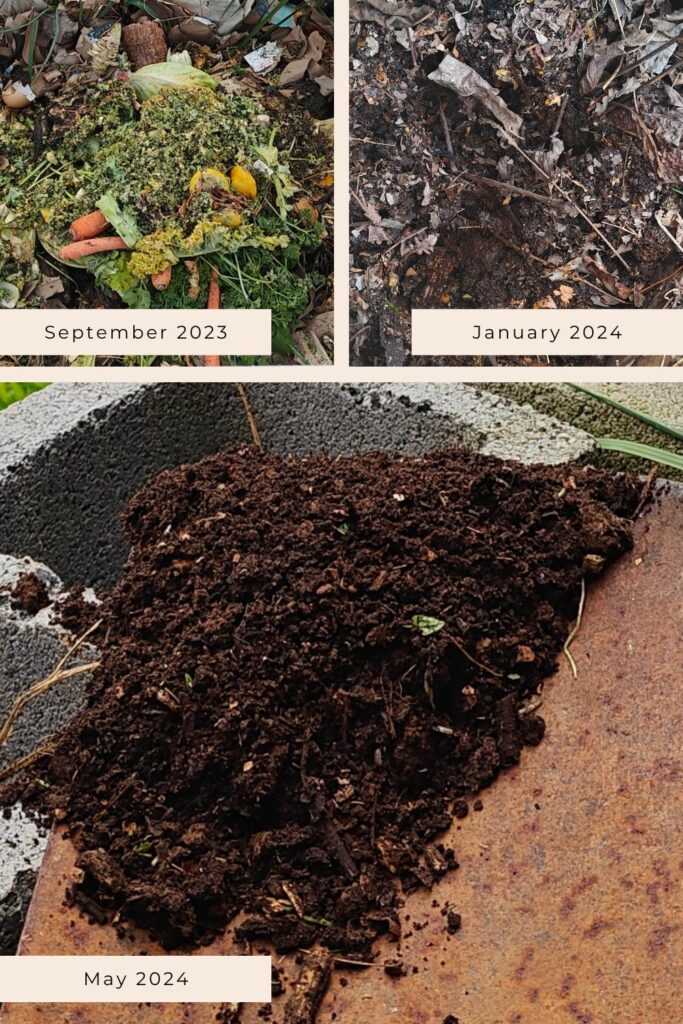
Live more mindfully by reducing waste and turning organic debris into nutrient-rich fertilizer for your garden. Composting at home is a rewarding and worthwhile practice for any household. You’ll experience a unique energy exchange when nourishing your plants with a custom blend of reclaimed, homemade black gold.
Composting demonstrates the transformative properties of nature. It is a practice that relies on the interconnected purpose and service of each component in the matrix. The source energy drives the conversion of all things. This energy is restorative, renewing, and life giving. Watch the nature of the matter unfold, breaking bonds so that new ones can form. In time, the unwanted and unused remains are transformed into a nutrient-rich medium for new life and fruitful growth.
Reduce Waste
Composting at home is a great way to reduce the amount of household waste that accumulates. After starting a backyard compost pile, my husband and I both noticed how much longer it took to fill up our trash cans. Cooking most of our meals at home, our kitchen produces daily amounts of waste from fresh fruit and vegetable cuttings. I keep a basket in the kitchen that we can conveniently grab anytime we are cutting up fresh produce. This makes it easy to transfer fruit and vegetable waste to our compost pile. I highly recommend a convenient little compost shuttle like this for your kitchen.
Ideas, Tips, and Tricks
We use a two-bin composting system. One bin is used to actively collect our compost while the other bin is breaking down the material we collected in the previous year. In the fall of each year, we alternate the bin that’s used to actively collect material. This pause in accumulation gives the collection time to fully decompose. This stage of composting is sometimes referred to as the curing phase. It requires some patience, but it’s worth the wait. By springtime, all of the organic material in the inactive bin has turned into a fine fertilizing dirt and is ready to be used throughout the summer in the garden.


Covering a Compost Pile
Covering a compost pile can prevent home pets and wild animals from getting into any food waste. Be sure to allow plenty of airflow when covering compost. The microbes in the pile need oxygen to readily break down the organic material.
Compost Layers
Create compost layers of green and brown materials for nitrogen and carbon fixation. The green layers supply nitrogen while the brown layers supply carbon to the compost pile. The ideal ratio of brown to green material is 4 parts brown to 1 part green. This ratio is incredibly flexible and will not make or break your composting system. With enough time, any ratio of material will eventually decompose. However, our compost gets rather smelly when the green layers are more abundant than the browns. Mixing in and topping the pile with brown material seems to do the trick.
Nitrogen Fixing Material (greens)
- fruit and vegetable waste
- grass cuttings
- coffee grounds
- tea bags and leaves
- plants, stalks, and flowers
Carbon Fixing Material (browns)
- dry leaves
- sticks and twigs
- eggshells
- paper and cardboard (toilet paper and paper towel rolls, paper bags)
- straw and hay
- nut shells
- corn cobs
- some parchment paper and coffee filters are also compostable
Non-Compostable Material
- meat and bones
- Dairy products (cheese, milk, etc.)
- fat, oil, grease
- pet waste
- plastic and other inorganic material
- diseased plants
- pesticide treated plant material
Get Started Composting at Home
Starting your own backyard compost does not have to be expensive. It is not necessary to buy the compost tumbler you’ve seen on amazon or at the hardware stores. Below are three simple and affordable ways to begin composting at home.
A pile covered with a crate. My first compost started with a crate covering a few banana peels in the back of our yard. A wooden crate was turned upside down to cover the compost pile and a few bricks were placed on top of the crate to keep it weighed down. The set-up is short-term since it’s not the best way to contain a compost pile as it grows. However, this is a quick way to get a pile started while prepping for a more expansive and long-term composting system.

A bucket. Simply toss your banana peels and grass clippings into a bucket and call it a day. If covering the bucket, be sure to have holes in the lid. There needs to be a significant amount of airflow for the survival of bacteria that break down the organic material.

A cinderblock cube. Assemble cinderblocks in the shape of a square and stack additional blocks to reach a desired height. This set-up can be covered with a screen, mesh, chicken wire, or a tarp. Be sure to leave room for airflow if covering the compost pile with a tarp.
DIY Compost Bin
My husband built our backyard compost bin using 2 x 4s and chicken wire. In the future, I plan to have him build two more so we can set up a 3 bin compost system. One bin will be designated for incoming material, the second for material in the curing phase, and the third for finished compost. A 3-bin system streamlines the composting process by enabling rotation and transfer of material between bins. This expedites the curing phase and ensures a continuous supply of finished compost.
Please contact us if you would like the DIY building plans for the compost bin below. We would be happy to share them with you!


“The flower, when it wilts, becomes the compost. The compost can help grow a flower again. Happiness is also organic and impermanent by nature. It can become suffering and suffering can become happiness again.”
― Thich Nhat Hanh